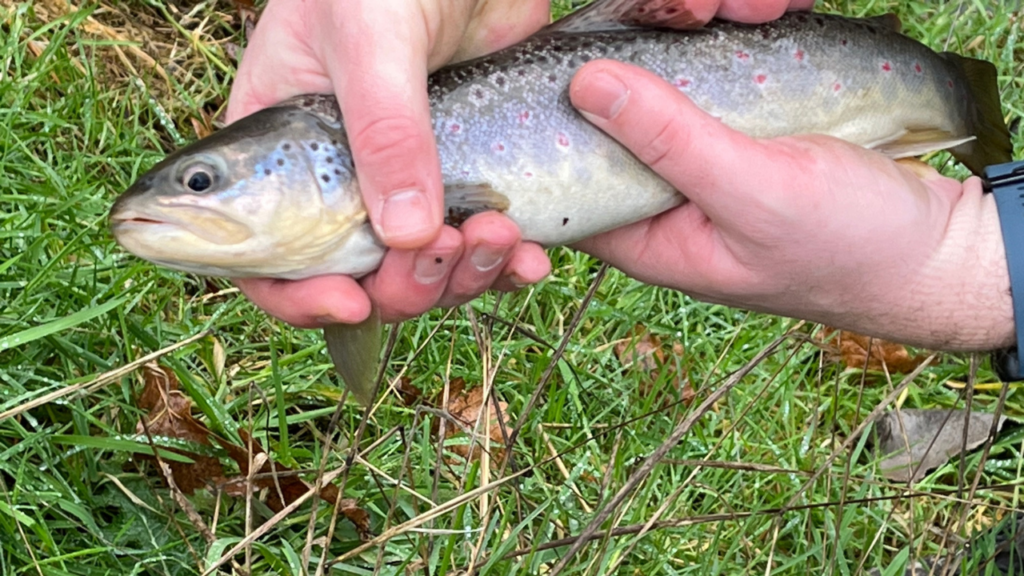We are currently carrying out a fish survey at Knowle Park. Visitors have reported seeing fish “topping” in the lake, and we want to identify what they are.
No fish have been introduced to the lake, although they will, of course, occur naturally. Fish eggs are sometimes carried on the legs of water birds, and we have had many such birds visit the lake (including Mute Swans, Canada Geese, Egyptian Geese, Little Egrets, Herons, and Little Grebe, to name a few).
Fish eggs can also come into the lake on water plants, and we have planted numerous reeds, oxygenating plants and Water lilies in the lake.
Additionally, it’s potentially possible for fish to migrate into the lake from the Brook through the outlet pipe and chamber.
Littlemead Brook, which runs through Knowle Park, contains fish, including Brown Trout and Bullshead (sometimes called Miller’s Thumb because of their flattened shape).
We have set up three fish traps, a net system that temporarily captures fish that enter the net for the food inside. Think of them as underwater B&Bs for fish, offering a temporary stay for a quick health check. We check these nets every 24 hours and release any caught fish.
Minimal handling of the fish takes place, and they are speedily returned to the water.
The first fish we recorded came from the Brook immediately adjacent to the outlet. It was a 12” long Brown Trout.
Its presence is a hopeful sign, suggesting a thriving ecosystem. Yet, here’s a twist: despite the challenges posed by Thames Water discharging sewage upstream, this resilient species signals a surprisingly healthy river. Nature’s resilience in the face of human-induced adversity is truly inspiring.
We have also been told that there might be Goldfish in the lake. This is disappointing, if true, as we would only ever want native fish; it is a wildlife lake.
If we capture any introduced fish, such as Goldfish, we will re-home them.
We will keep you updated on any identified fish and expect to see more as it gets warmer.
We also expect the population of fish to grow as the lake and its plant life mature.

